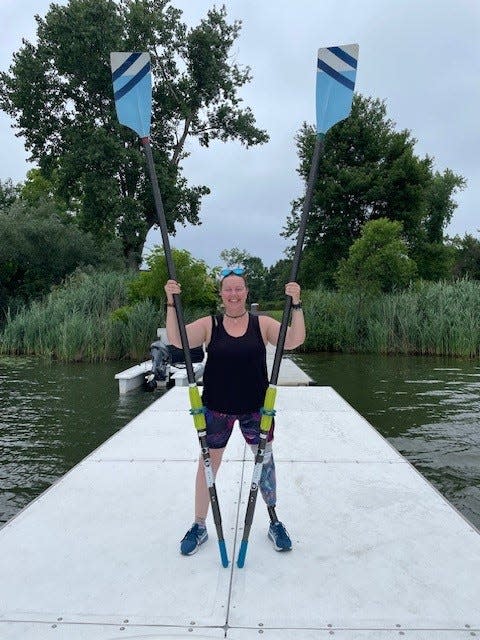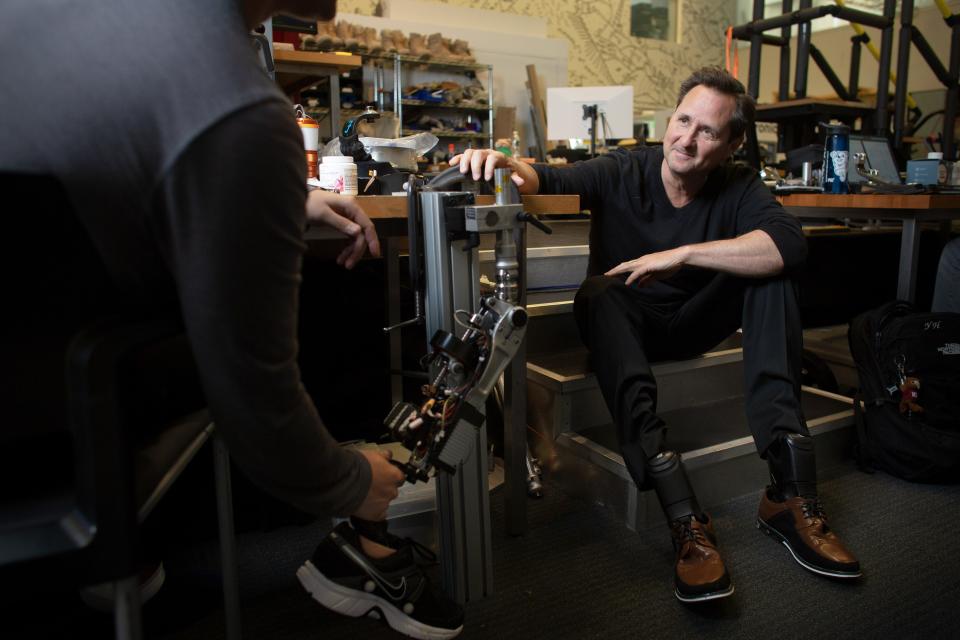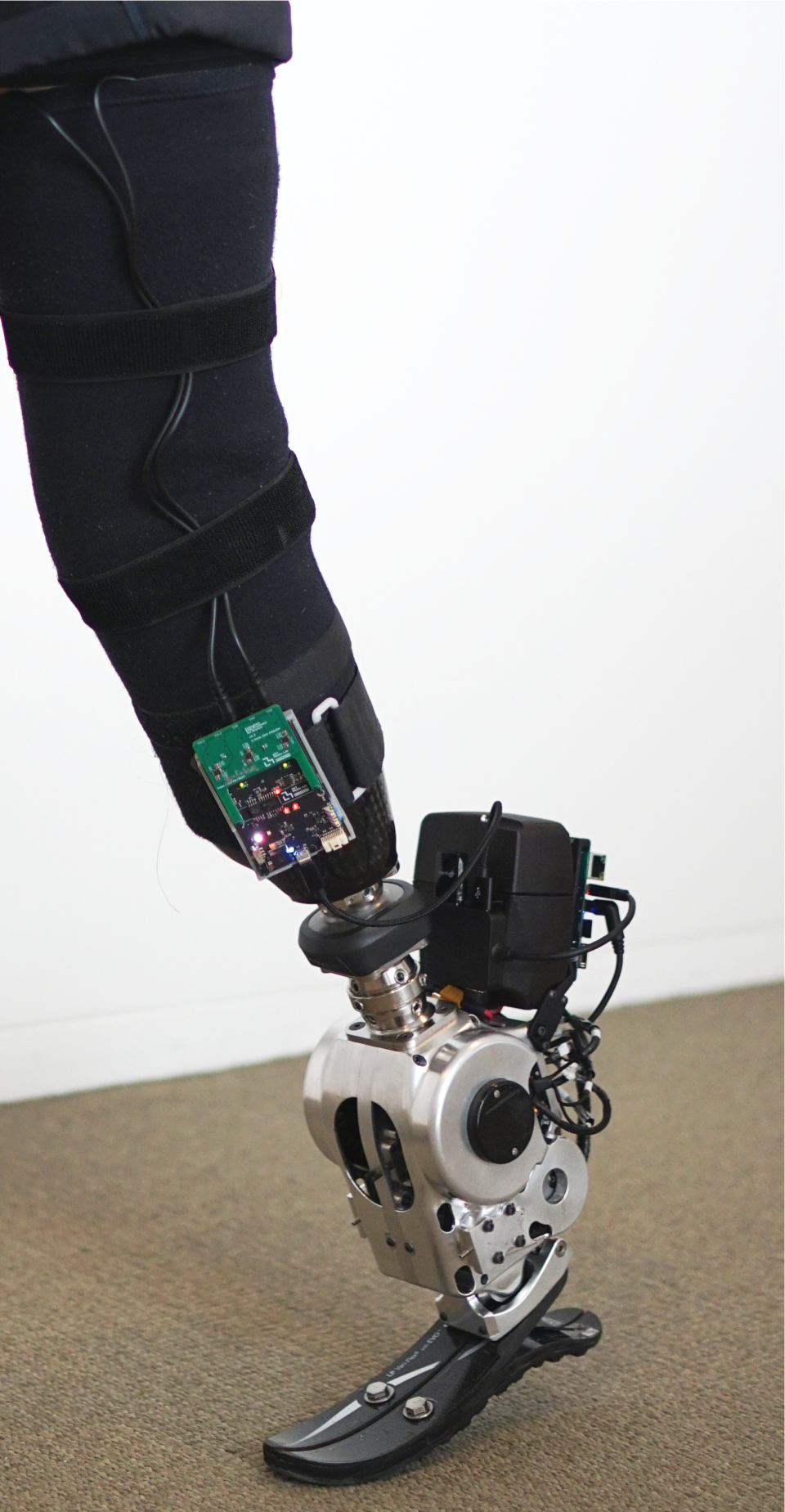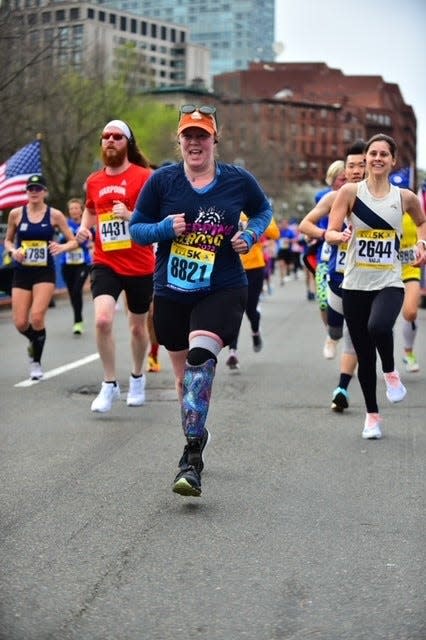Novel surgery meets bionics in breakthrough for limb amputation
CAMBRIDGE, Massachusetts ? Leg amputations haven't changed much in a very long time.
Civil War-era textbooks describing them look pretty similar to contemporary ones, said Dr. Matthew Carty, a staff surgeon at Brigham and Women's Hospital in Boston. "You could even dial it back as far as 2,000 years ago," he said, and the standard approach to limb amputation wouldn't be "all that different."
But in recent years, a small number of surgeons, including Carty, have been trying to find better methods.
Collaborating with Hugh Herr, an MIT technologist and double-amputee, Carty developed a new surgical approach, linking pairs of muscles involved in flexing and turning the ankle.
Now, the two have a new paper, published Monday in the journal Nature Medicine, showing their success with seven patients. All had both the surgery, called AMI (for agonist–antagonist myoneural interface) and a bionic prosthetic.
The combination, the study shows, allows the seven to walk naturally, at a normal pace, even up stairs and on uneven surfaces, as if the legs were their own.
Amy Pietrafitta, 47, of Plymouth, Massachusetts, was one of the seven.
"This gives me so much mobility, I love it," said Pietrafitta, a para athlete who runs marathons, dances, is a member of The Boston I.C.E. Storm sled hockey team and will compete in the 2024 World Coastal Rowing Championships in Italy in September.

But she was only able to use the bionic lower leg in Herr's MIT lab at the K. Lisa Yang Center for Bionics. Now she's back to her regular prosthetic.
"It did make me a little teary eyed," she said of leaving the bionic leg behind. "It's slightly heart-breaking."
A different way to amputate
In the AMI surgery, muscles typically involved in flexing and extending the ankle are linked, as are those involved in inverting and turning out the ankle.
About 60 patients worldwide have received the amputation procedure since the pair developed it about a decade ago, Carty said.
The surgery takes about twice as long as a typical amputation ? about 3 hours as opposed to 90 minutes ? but isn't much more technically complicated, he told USA TODAY. It doesn't need to be done at an academic medical center. Any modern hospital is good enough, he said.
"Our hope is this or something like this becomes the standard way of doing amputations around the world," Carty said.
The AMI can also be done after an amputation ? even years later ? as a revision surgery, as long as the needed muscles haven't atrophied.
Herr, who had his own amputation surgery in 1982 after a climbing accident, said he is interested in getting an AMI procedure himself, though only one of the two muscle pairs remains functional.
Bionic limbs
Movements with the bionic limb are much more natural thanks to the AMI, Pietrafitta and Herr said.
With a regular prosthetic, "your foot fights you back," Pietrafitta told USA TODAY. She's adapted to the pushing she gets from her passive prosthetic, but the bionic one felt much more like a part of her.
She was able to go on point dancing ballet and stay up even longer on the bionic foot than her natural one. "That was amazing. That brought tears to my eyes as well," she said.

Today's most advanced prosthetics typically use electronics to move a synthetic ankle, propelling the person forward. The person essentially has to respond to the signals from their prosthetic.
By contrast, the device Herr developed includes electrodes placed on the skin above the point of amputation, outside the muscles paired by the surgery, and is responsive to them. When the muscle normally involved in lifting the ankle contracts, the prosthetic ankle lifts up, when its opposite muscle contracts, the ankle flexes.
Connecting to the person's own muscles also allows them to sense where their prosthetic limb is in space in a way that is not possible with standard surgery and devices, Herr, Carty and Pietrafitta said.
Eventually, Herr said, he hopes to replace surface electrodes with implanted small magnetic spheres that can more accurately track the movements of the muscle pairings with higher fidelity to better control the prosthesis.

The combination of the AMI surgery with the bionics is particularly powerful, said Dr. Benjamin "Kyle" Potter, who was not involved in the study, but who does similar research and is the incoming chairman of the department of orthopedic surgery at Penn Medicine in Philadelphia.
"The magic here is really in the surgery," said Potter, who recently left the Walter Reed National Military Medical Center after 23 years. "What they've demonstrated here is that, although customized, a relatively simple bionic limb can help the patients walk better."
The research proves that natural walking won't require $1 million worth of technology, Potter said. "The synergy of the novel surgery with a prosthesis that can harness that power is probably the real breakthrough here."
The best thing about the surgery, Carty said, is that it enables amputees to take full advantage of available technological advances.
"Longer term, as this experimental technology moves from the lab hopefully to the commercial realm, they will have access to technology that they will be albe to use better than a standard amputee can," Carty said. Herr expects it will take about five years for the bionic limb to become commercially available.
A long, painful journey with a happy ending
Pietrafitta was injured on June 9, 2014, when superheated water fell on her at her job as a restaurant server. She was burned over a quarter of her body, including her torso and left leg.
She had skin grafts and surgeries to reconstruct her damaged leg but was left with something called complex regional pain syndrome.
On a 50-point scale, complex regional pain syndrome is said to register at about a 42, higher than pregnancy and double the pain of a toothache. "It's called the suicide disease because you can't live in that kind of pain forever," Pietrafitta said.
Her doctor eventually determined said she needed an amputation because her injured leg was no longer functional, but her insurance company kept turning her down for the surgery, saying her pain syndrome made her a poor candidate. For more than two-and-a-half years, she and her doctors fought with the insurance company before a judge finally allowed Carty to give her the AMI amputation on Feb. 27, 2018.

Before the surgery, she took multiple oxycontin, diazepine, clonidine and zoloft every day to cope with the pain. She hasn't needed any since her recovery. "It's been amazing. I have no pain at all," she said. "From one extreme to the other."
She's able to stand in the shower again and even flip her long hair forward and back without falling. If she ever trips, it's because of her natural foot.
"I feel like I still have my limb," she said. "I know I'm an amputee, but my brain forgets in a way, because it feels like so natural."
Herr has long sought to "rebuild bodies, to give persons back after amputation their full limb restoration, where they view the synthetics not an an external tool but as part of their bodies, as self," he said in a call last week with reporters.
"This study is a critical step forward, pun intended, toward that embodiment."
Karen Weintraub can be reached at [email protected].
This article originally appeared on USA TODAY: Amputation advance: novel AMI surgery meets bionics
